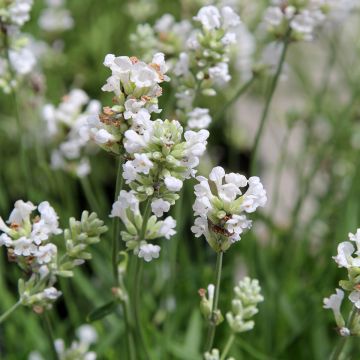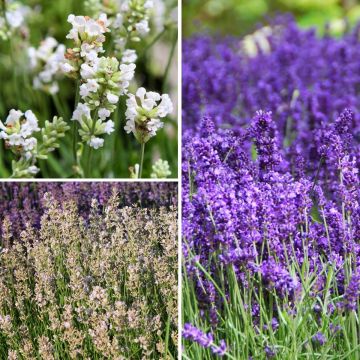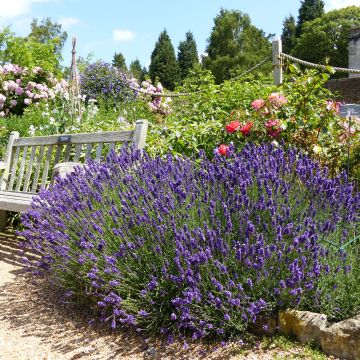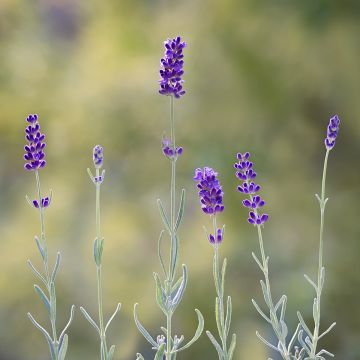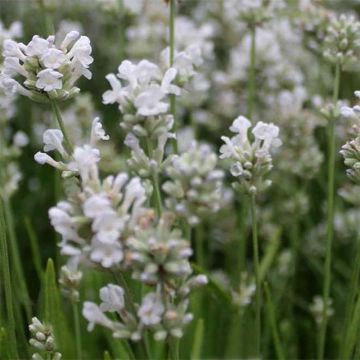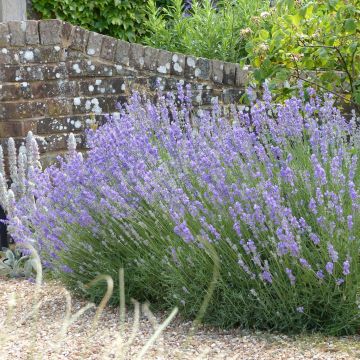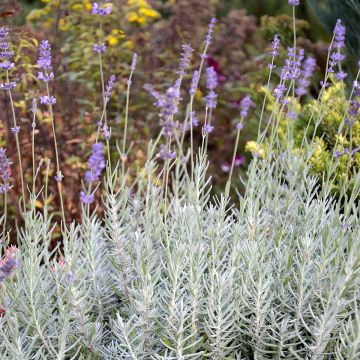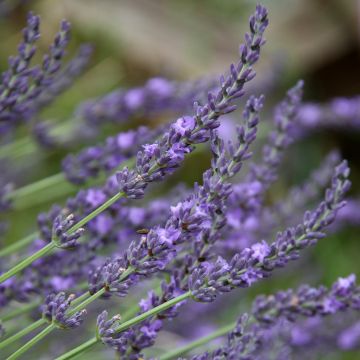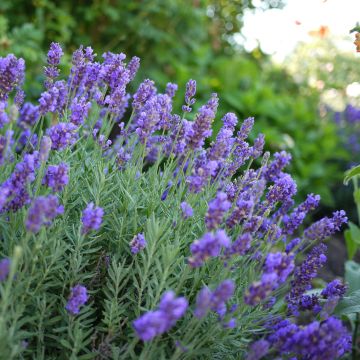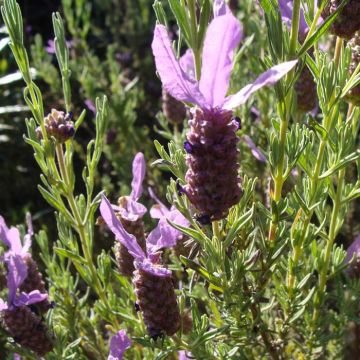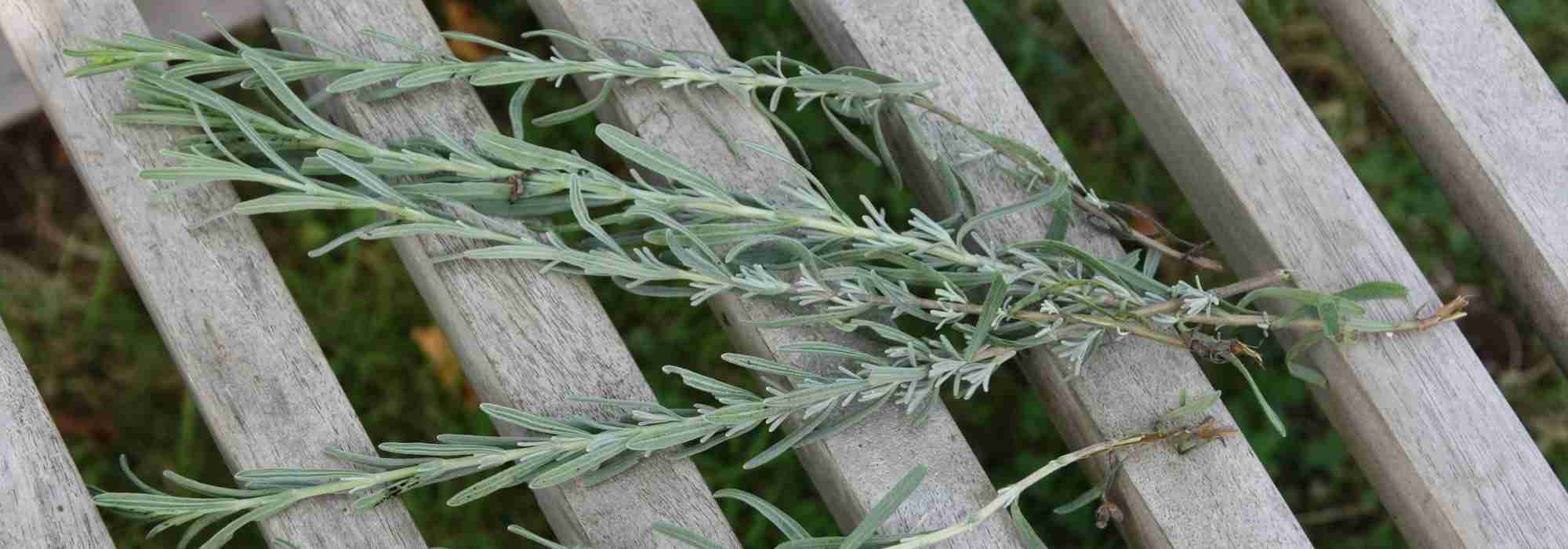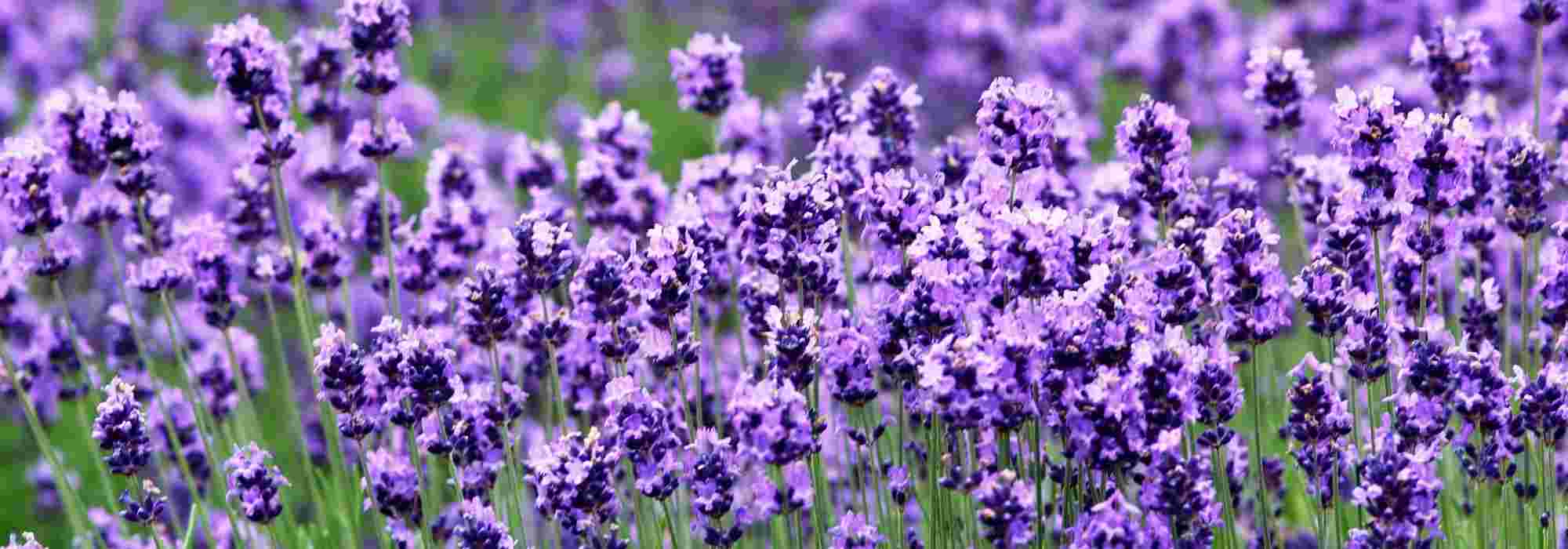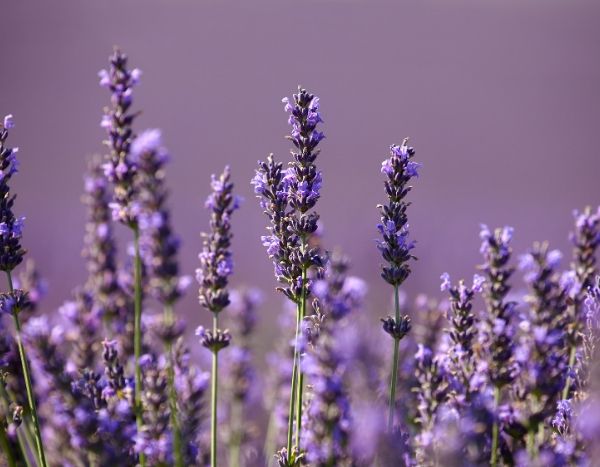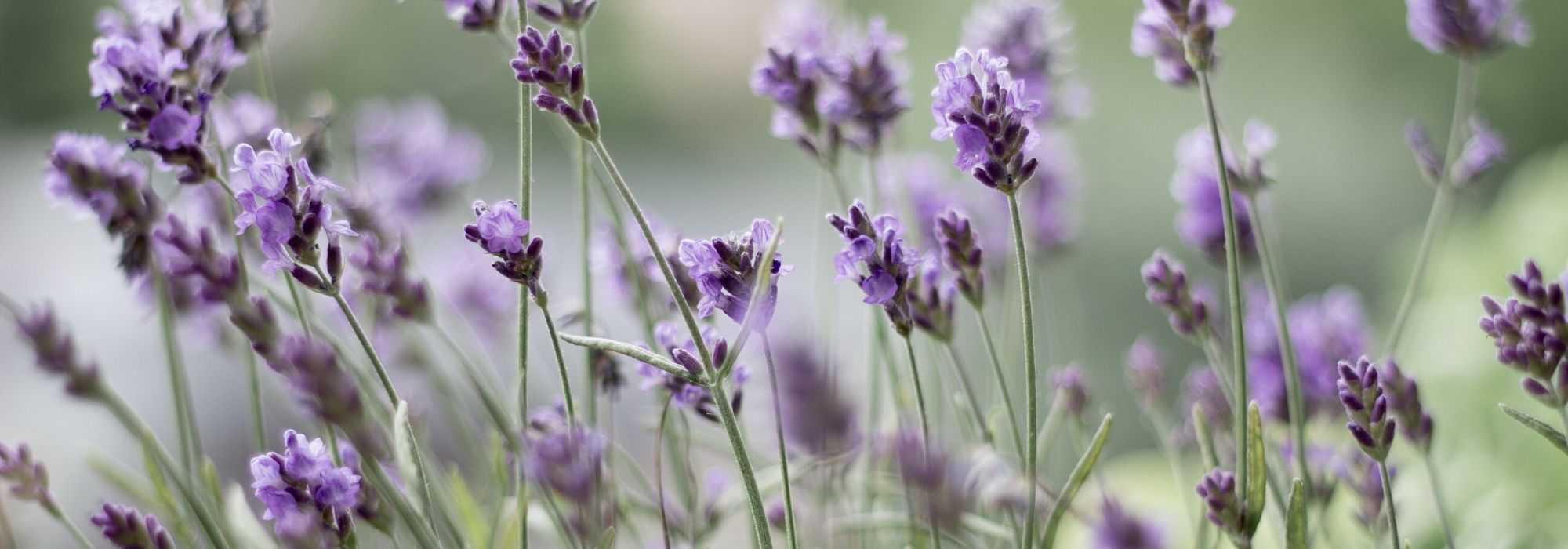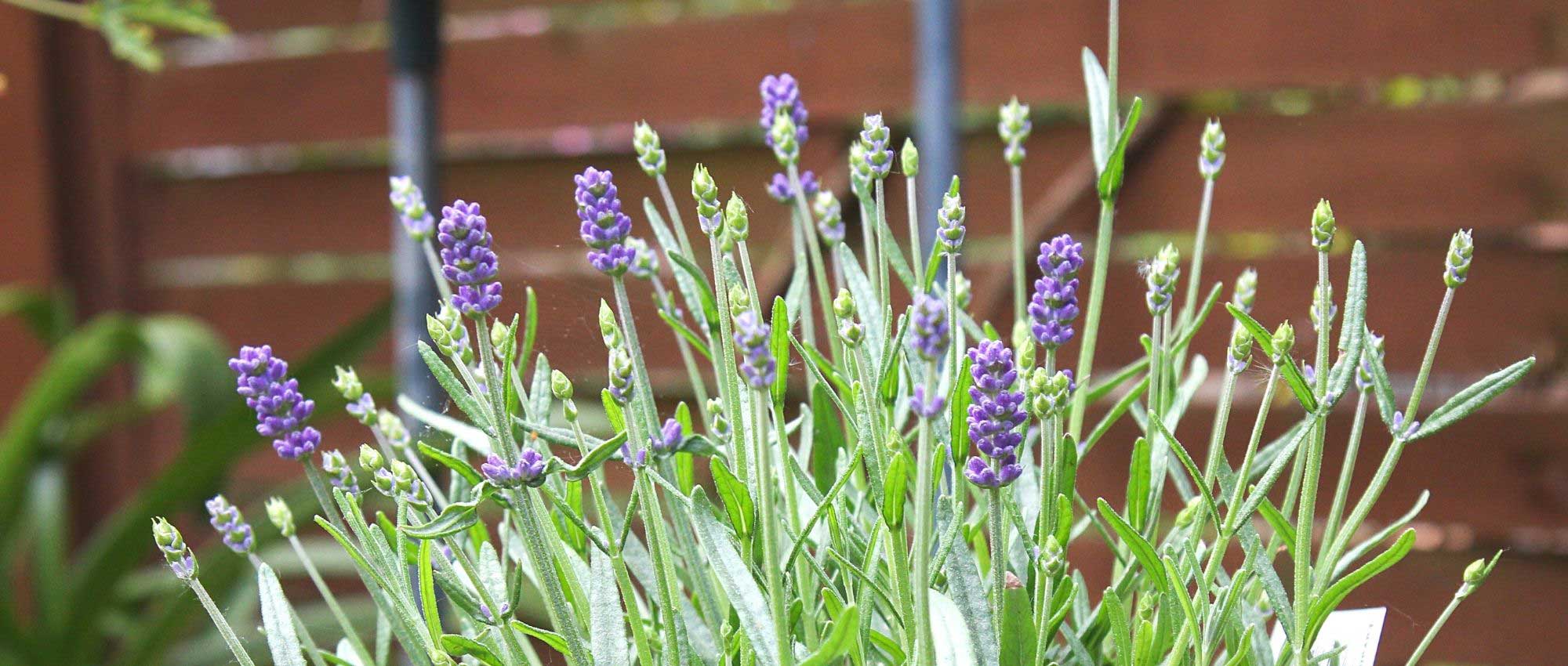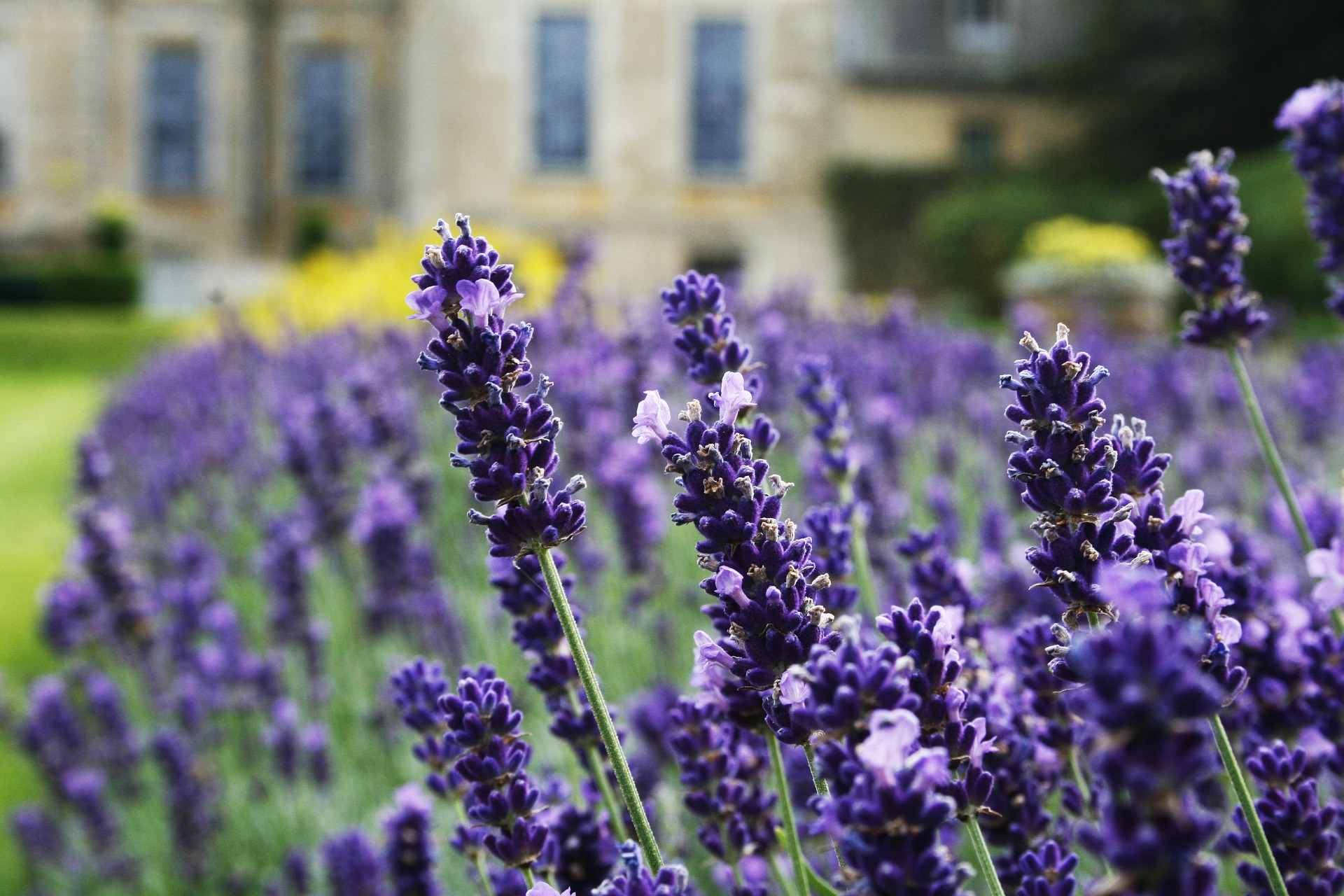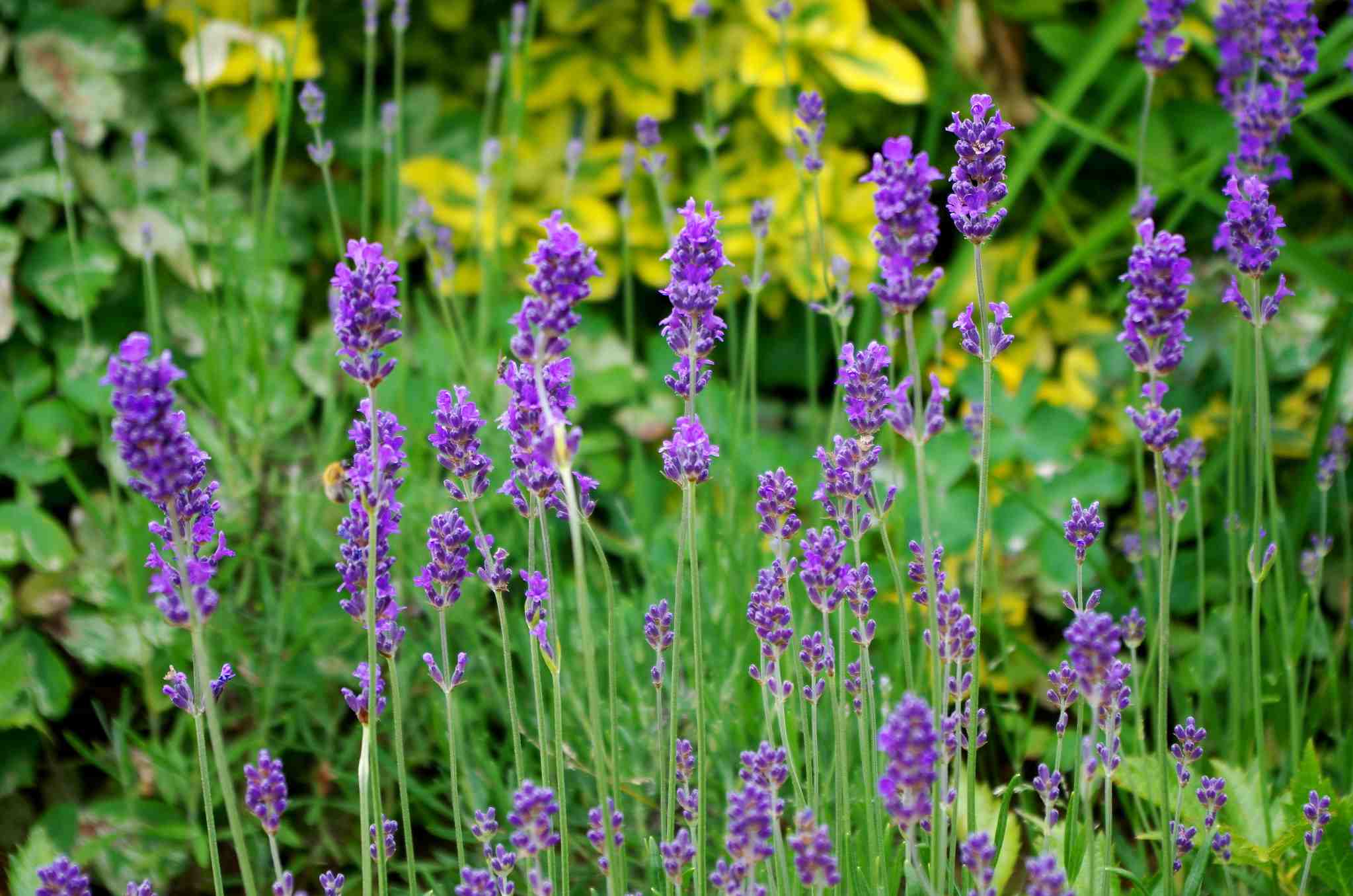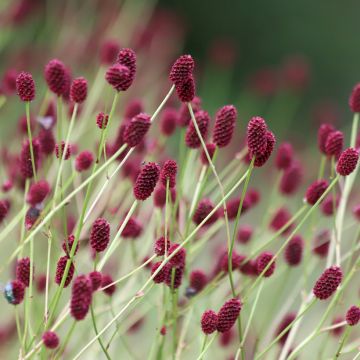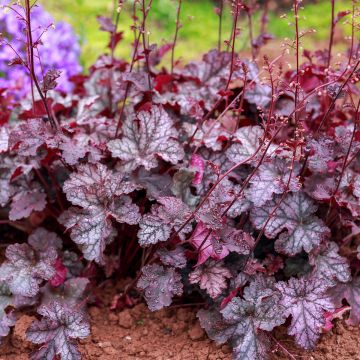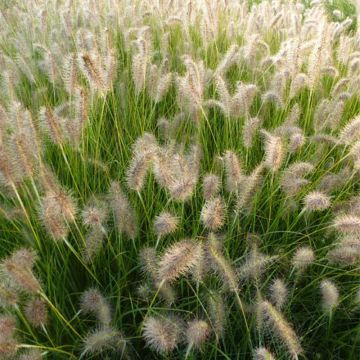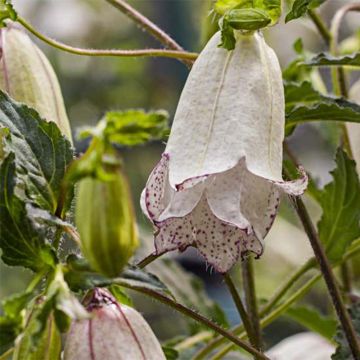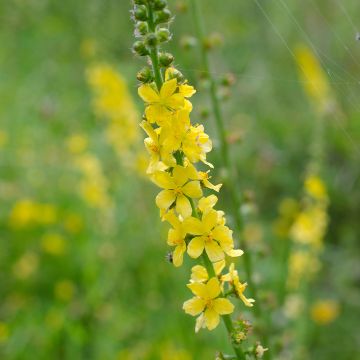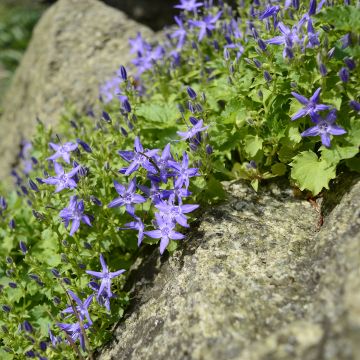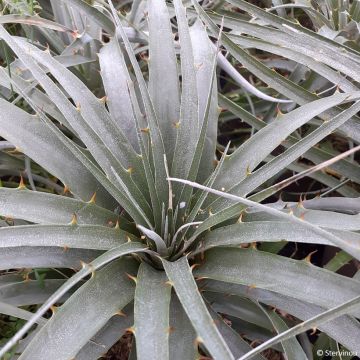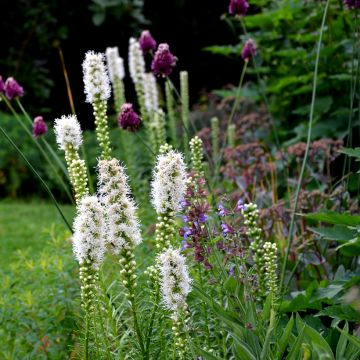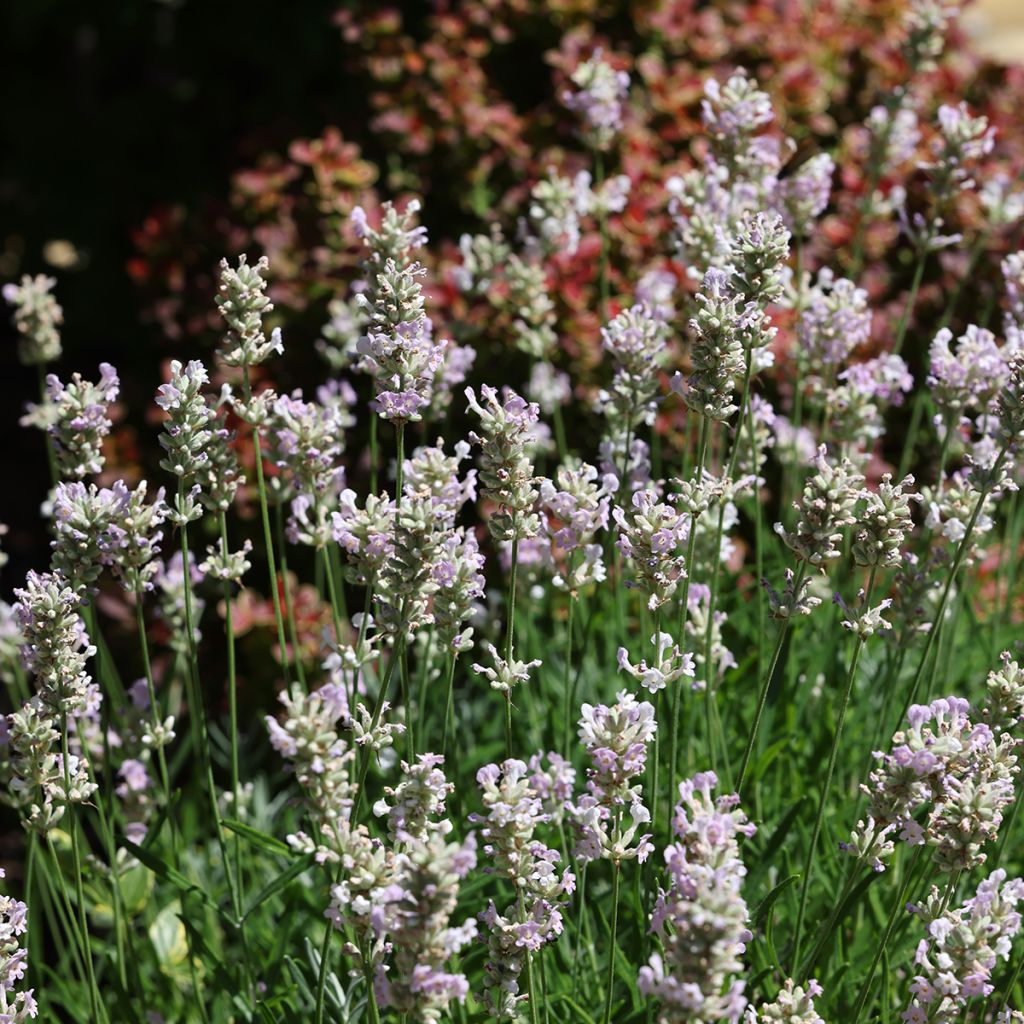

Lavandula angustifolila Rosea - True Lavender
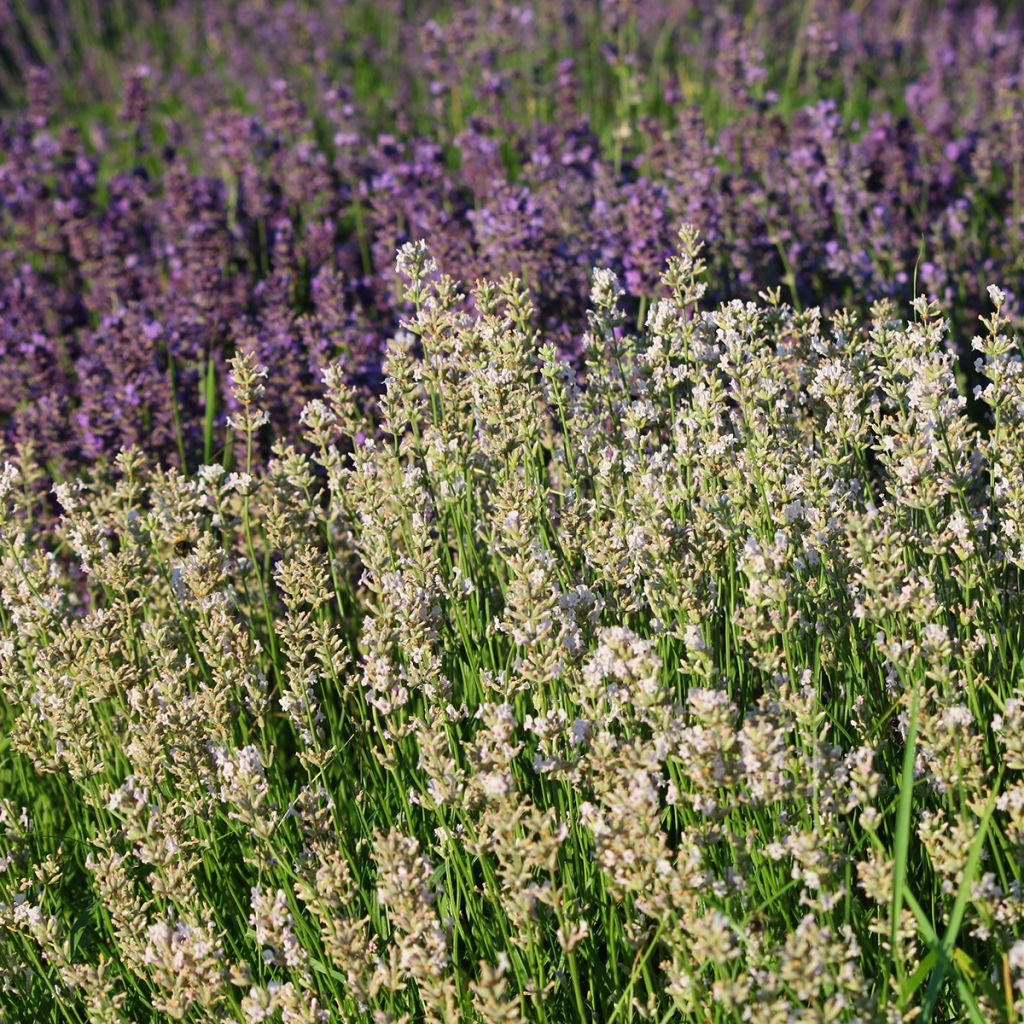

Lavandula angustifolila Rosea - True Lavender
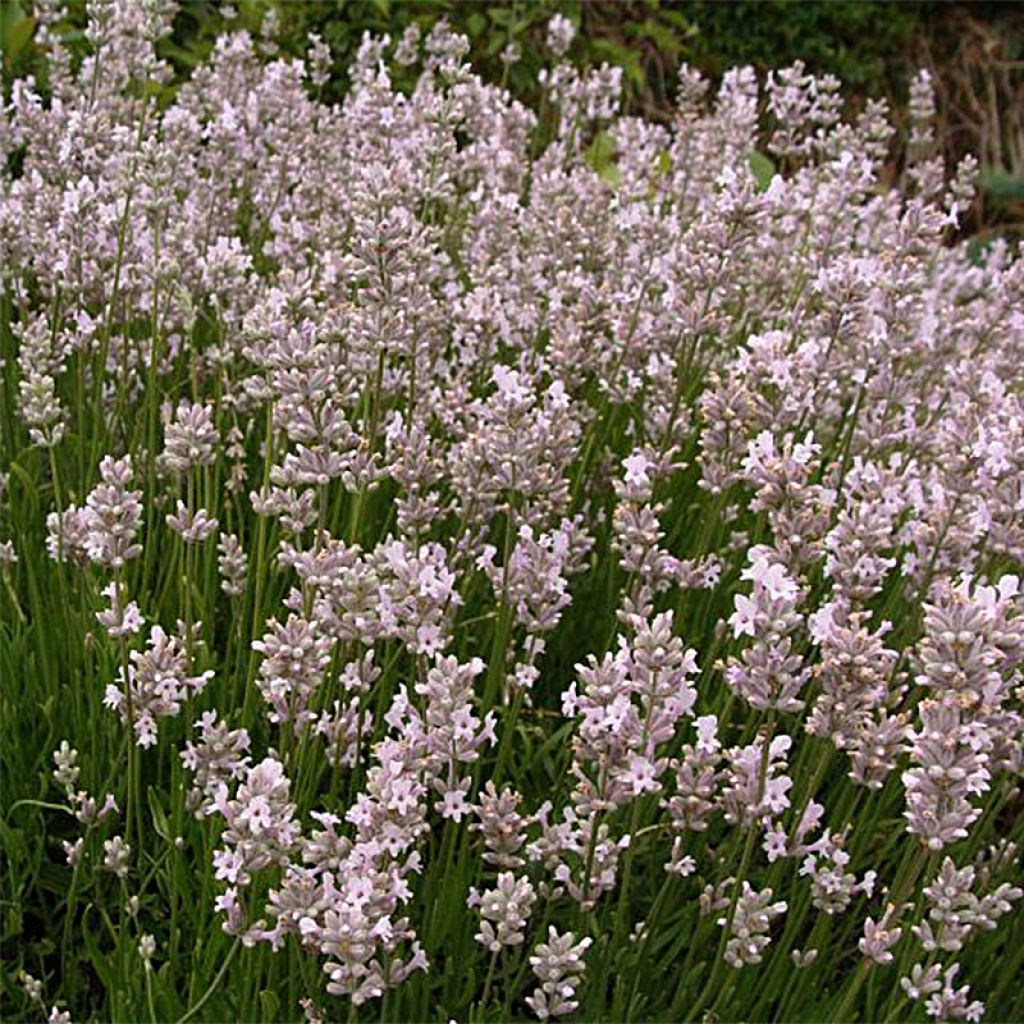

Lavandula angustifolila Rosea - True Lavender
Lavandula angustifolila Rosea - True Lavender
Lavandula angustifolia Rosea
True Lavender, English lavender
Special offer!
Receive a €20 voucher for any order over €90 (excluding delivery costs, credit notes, and plastic-free options)!
1- Add your favorite plants to your cart.
2- Once you have reached €90, confirm your order (you can even choose the delivery date!).
3- As soon as your order is shipped, you will receive an email containing your voucher code, valid for 3 months (90 days).
Your voucher is unique and can only be used once, for any order with a minimum value of €20, excluding delivery costs.
Can be combined with other current offers, non-divisible and non-refundable.
Home or relay delivery (depending on size and destination)
Schedule delivery date,
and select date in basket
This plant carries a 12 months recovery warranty
More information
We guarantee the quality of our plants for a full growing cycle, and will replace at our expense any plant that fails to recover under normal climatic and planting conditions.
Does this plant fit my garden?
Set up your Plantfit profile →
Description
The Lavandula angustifolia 'Rosea', known as true lavender or English lavender, forms a compact, dense and bushy undershrub with a fragrant summer flowering of lilac pink, whose persistent aromatic green foliage will illuminate the garden, even in winter!
This variety of lavender belongs to the family of Lamiaceae, and is native to the Mediterranean regions of southern Europe. It forms a small-sized bush of 60 cm (24in) in all directions, with an erect habit, very compact, dense and vigorous, forming a rounded bushy clump. Its decorative evergreen foliage is composed of narrow aromatic leaves of a beautiful green color. In summer, this lavender is covered with highly scented lilac pink flowers that are also melliferous, borne on short cylindrical spikes at the end of woody stems.
This pink lavender, like most other lavenders, needs to be planted in full sun in an ordinary soil (or even dry and rocky), that is very well-drained. In a sunny and warm location, its green foliage will be vibrant and its pink flowers will exude an intense fragrance.
As an ornamental and Mediterranean plant par excellence, lavender can be used in flower beds, as standalone plants, for borders, rock gardens, potted plants, coastal areas, and even as low flowering hedges.
With its graphical aspect, the color of its foliage, and its lilac pink flowers, there are infinite possibilities for the gardener. Lavender Rosea can be paired with grasses that, with their tousled habit, will contrast with its rounded shape and create a very graphical scene. It will also work wonders at the base of climbing roses, paired with shrubs like cistus, landscape roses, and shrub sages; or mixed with Iris germanica and Poppies. You can also create beautiful potted arrangements to place on the terrace or balcony. It is also possible to combine several varieties of lavenders together, which will compose a harmonious and elegant tableau, both in terms of flower and foliage color variety, as well as the size and volume of the plants.
Properties: Lavender is a very melliferous plant, contributing to the preservation of bees: the nectar from its flowers attracts bees, making it one of the most renowned honeys.
Lavandula angustifolia is a medicinal plant, whose therapeutic virtues were once widely used: its essential oil has antiseptic, antispasmodic, healing, purifying, diuretic properties, etc.
Anecdote: In Roman times, women who wanted to secretly taste wine (a drink forbidden to them) would chew a few sprigs of lavender to perfume their breath and deceive the vigilance of their husbands.
Lavandula angustifolila Rosea - True Lavender in pictures
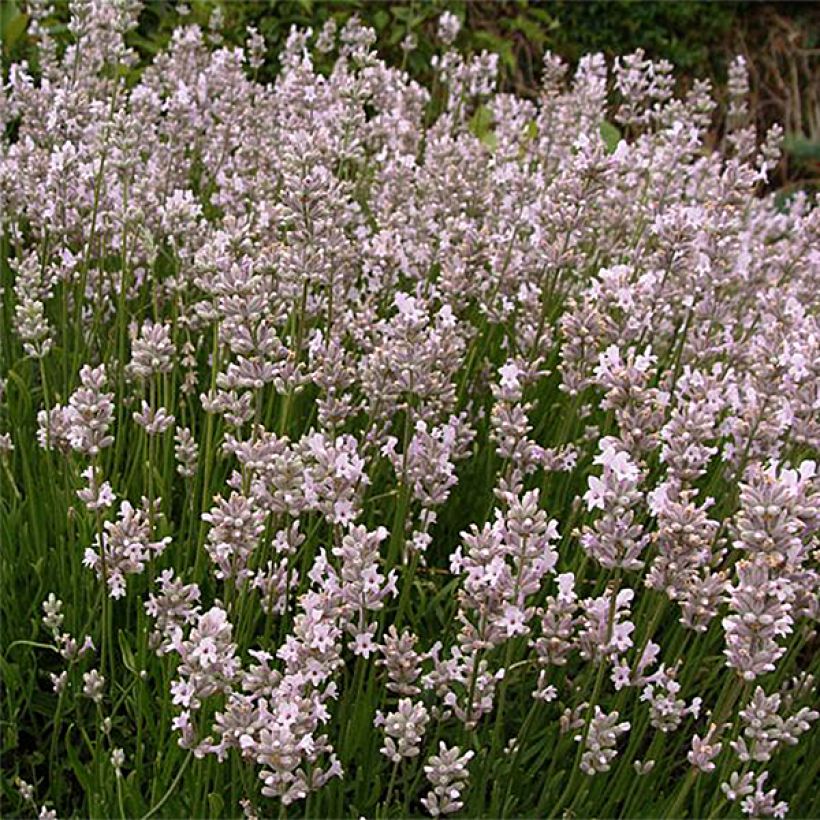

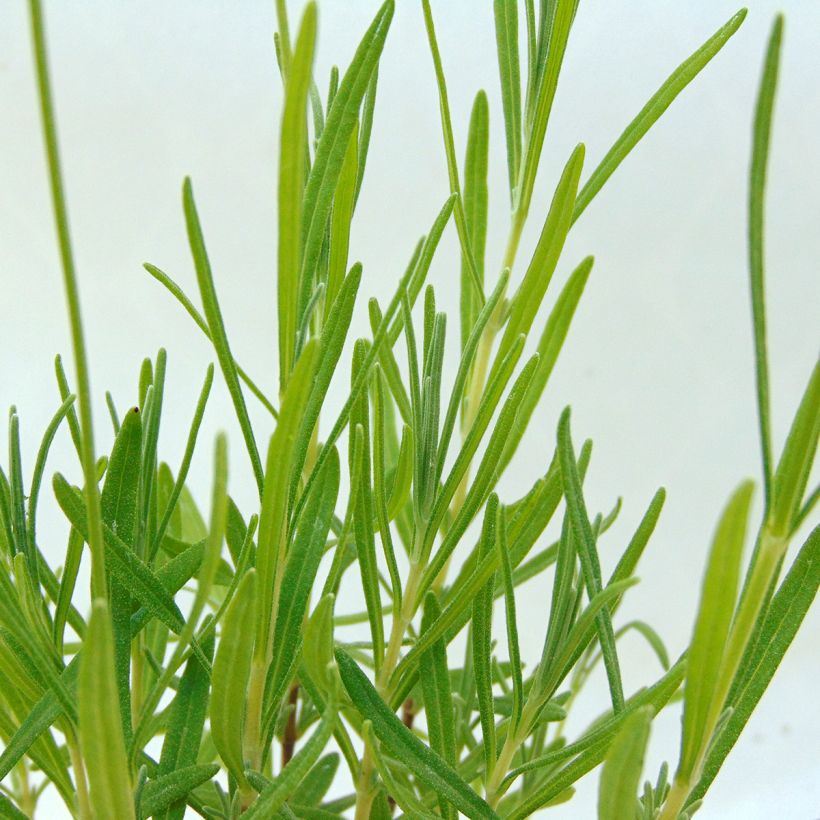

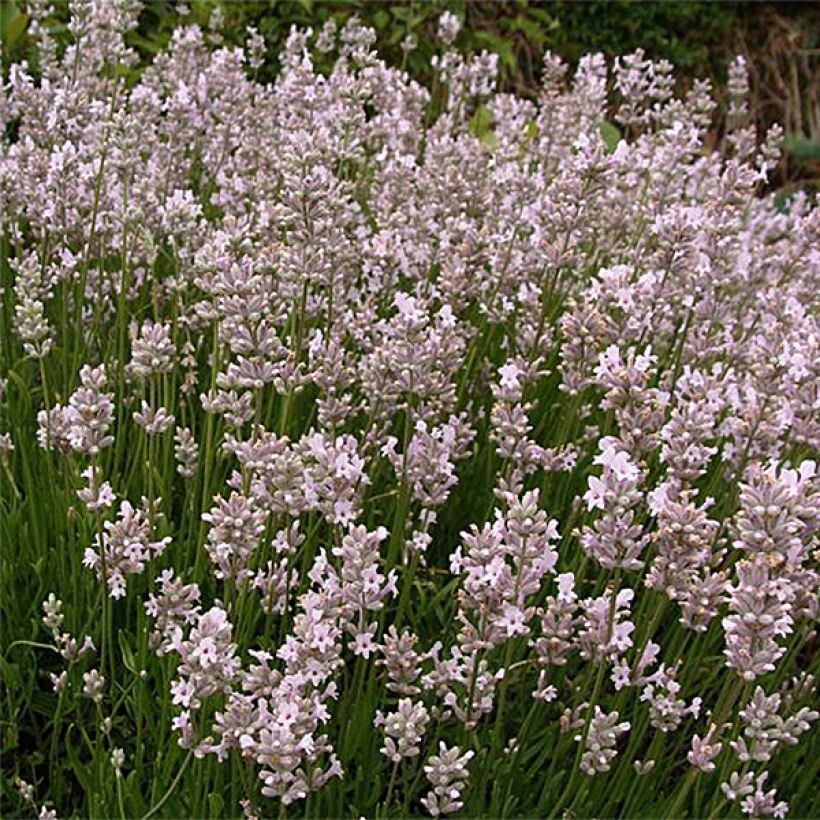

Flowering
Foliage
Plant habit
Botanical data
Lavandula
angustifolia
Rosea
Lamiaceae
True Lavender, English lavender
Cultivar or hybrid
Other Lavendula - Lavender
View all →Planting and care
Very easy to cultivate and hardy (-15°C (5°F)), Lavandula angustifolia 'Rosea' nevertheless requires to be planted in a warm and sunny location, in a light, limestone, stony and dry soil, very well-drained. Indeed, it does not tolerate heavy soils and excess water. If this is the case, it will be necessary to lighten the soil by adding sand and gravel. The pruning of Lavandula angustifolia should be done every year, just after flowering, by removing the faded inflorescences. A second pruning should be done in early spring, by cutting the plant back by one third (without going into the old wood), to maintain a beautiful compact and rounded shape, and its flowering qualities. Lavenders require very little water, so watering will only be necessary in the first year of planting. During the pruning after flowering, do not throw away the faded inflorescences, but collect them to make sachets that will delicately perfume the closets, and also make excellent moth repellents. For making dried bouquets, it is necessary to harvest the fully bloomed lavender flowers and let them dry in a dry and ventilated place, upside down.
Planting period
Intended location
Care
Planting & care advice
-
, onOrder confirmed
Reply from on Promesse de fleurs
Similar products
Haven't found what you were looking for?
Hardiness is the lowest winter temperature a plant can endure without suffering serious damage or even dying. However, hardiness is affected by location (a sheltered area, such as a patio), protection (winter cover) and soil type (hardiness is improved by well-drained soil).

Photo Sharing Terms & Conditions
In order to encourage gardeners to interact and share their experiences, Promesse de fleurs offers various media enabling content to be uploaded onto its Site - in particular via the ‘Photo sharing’ module.
The User agrees to refrain from:
- Posting any content that is illegal, prejudicial, insulting, racist, inciteful to hatred, revisionist, contrary to public decency, that infringes on privacy or on the privacy rights of third parties, in particular the publicity rights of persons and goods, intellectual property rights, or the right to privacy.
- Submitting content on behalf of a third party;
- Impersonate the identity of a third party and/or publish any personal information about a third party;
In general, the User undertakes to refrain from any unethical behaviour.
All Content (in particular text, comments, files, images, photos, videos, creative works, etc.), which may be subject to property or intellectual property rights, image or other private rights, shall remain the property of the User, subject to the limited rights granted by the terms of the licence granted by Promesse de fleurs as stated below. Users are at liberty to publish or not to publish such Content on the Site, notably via the ‘Photo Sharing’ facility, and accept that this Content shall be made public and freely accessible, notably on the Internet.
Users further acknowledge, undertake to have ,and guarantee that they hold all necessary rights and permissions to publish such material on the Site, in particular with regard to the legislation in force pertaining to any privacy, property, intellectual property, image, or contractual rights, or rights of any other nature. By publishing such Content on the Site, Users acknowledge accepting full liability as publishers of the Content within the meaning of the law, and grant Promesse de fleurs, free of charge, an inclusive, worldwide licence for the said Content for the entire duration of its publication, including all reproduction, representation, up/downloading, displaying, performing, transmission, and storage rights.
Users also grant permission for their name to be linked to the Content and accept that this link may not always be made available.
By engaging in posting material, Users consent to their Content becoming automatically accessible on the Internet, in particular on other sites and/or blogs and/or web pages of the Promesse de fleurs site, including in particular social pages and the Promesse de fleurs catalogue.
Users may secure the removal of entrusted content free of charge by issuing a simple request via our contact form.
The flowering period indicated on our website applies to countries and regions located in USDA zone 8 (France, the United Kingdom, Ireland, the Netherlands, etc.)
It will vary according to where you live:
- In zones 9 to 10 (Italy, Spain, Greece, etc.), flowering will occur about 2 to 4 weeks earlier.
- In zones 6 to 7 (Germany, Poland, Slovenia, and lower mountainous regions), flowering will be delayed by 2 to 3 weeks.
- In zone 5 (Central Europe, Scandinavia), blooming will be delayed by 3 to 5 weeks.
In temperate climates, pruning of spring-flowering shrubs (forsythia, spireas, etc.) should be done just after flowering.
Pruning of summer-flowering shrubs (Indian Lilac, Perovskia, etc.) can be done in winter or spring.
In cold regions as well as with frost-sensitive plants, avoid pruning too early when severe frosts may still occur.
The planting period indicated on our website applies to countries and regions located in USDA zone 8 (France, United Kingdom, Ireland, Netherlands).
It will vary according to where you live:
- In Mediterranean zones (Marseille, Madrid, Milan, etc.), autumn and winter are the best planting periods.
- In continental zones (Strasbourg, Munich, Vienna, etc.), delay planting by 2 to 3 weeks in spring and bring it forward by 2 to 4 weeks in autumn.
- In mountainous regions (the Alps, Pyrenees, Carpathians, etc.), it is best to plant in late spring (May-June) or late summer (August-September).
The harvesting period indicated on our website applies to countries and regions in USDA zone 8 (France, England, Ireland, the Netherlands).
In colder areas (Scandinavia, Poland, Austria...) fruit and vegetable harvests are likely to be delayed by 3-4 weeks.
In warmer areas (Italy, Spain, Greece, etc.), harvesting will probably take place earlier, depending on weather conditions.
The sowing periods indicated on our website apply to countries and regions within USDA Zone 8 (France, UK, Ireland, Netherlands).
In colder areas (Scandinavia, Poland, Austria...), delay any outdoor sowing by 3-4 weeks, or sow under glass.
In warmer climes (Italy, Spain, Greece, etc.), bring outdoor sowing forward by a few weeks.































